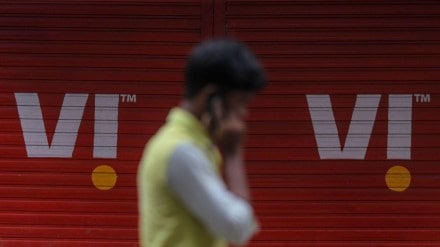Vodafone Idea CEO Akshaya Moondra on Tuesday said the company has seen its subscribers porting out to state-owned BSNL following the recent tariff hikes.
The same is because BSNL has not increased the tariffs as was done by the private telecom operators in July. Therefore, the port-out of Vodafone Idea users to BSNL has increased from the pre-tariff hike levels.
“We are watching the space. Our expectation is that customers who are used to using a good coverage and experience of 4G, probably the current offering of BSNL may not be to that extent (for them),” Moondra said during the April-June quarter earnings call with analysts.
“People who may have made a quick decision in terms of the tariffs may most likely come back but we will keep on watching the space and see what needs to be done as we move forward,” Moondra added.
Vodafone Idea currently has a 18.6% market share in terms of mobile subscribers compared to BSNL with a 7.4% share, according to data by the Telecom Regulatory Authority of India (Trai) as of May end.
Effective July, telecom operators increased the headline tariffs by up to 25%. “The trends of downtrading, slightly longer time being taken for recharges, downgrading that people spend the same amount of money on a lower benefit. All these trends are largely in line with the previous price increases,” Moondra said.
Owing to minimal increase in entry-level tariffs this time, there may not be much SIM consolidation, according to Moondra.
In the April-June quarter, Vodafone Idea overall lost 2.5 million mobile subscribers, taking its user base to 210.1 million at the end of June. 4G subscriber base rose by 400,000 in Q1 to 126.7 million from 126.3 million. The blended churn of subscribers was at 4% compared to 2-2.5% of peers.
The churn during the quarter was largely led by weak 4G network and absence of 5G rollout by the company. Notably, the company raised Rs 18,000 crore via follow-on public offering (FPO) and will utilise the funds for 4G expansion and 5G rollout.
“Post the successful closure of our FPO in April 2024, we have engaged with our equipment vendors for new contracts. We are focusing on high-impact and quickly executable priorities while we work towards closing discussions for long-term contracts,” Moondra said.
“The plans are decided and we are right now in the process of finalising our discussions with our vendors, so that we can order the equipment and start deliveries in the coming quarter,” he added.
There are many circles where Vodafone Idea has earlier deployed Chinese equipment and the same is not allowed for 5G. “So that is also part of the discussion as to what is the best way to address that. The longer discussions are in progress and we are likely to conclude that soon, probably over the next month maximum,” Moondra said.
In the meantime, Vodafone Idea has placed orders for some part of network upgrades for both hardware and software, which could be deployed quickly.
The company is looking to increase its data capacity by 15% and 4G population coverage by 16 million by the end of September.
“We do believe that this (user) churn rate will come down materially in the next few quarter, the whole hypothesis of the investment is that as opposed to currently being net subscriber negative, we should get to a net positive territory and start participating in the growth of the industry,” Moondra said.
Over the next three years, the company is also planning to incur a capex of Rs 50,000-55,000 crore. The company is also engaged with lenders for tying up debt funding towards the execution of our network expansion.
Vodafone Idea’s net loss for the June quarter narrowed to Rs 6,432 crore from Rs 7,674 crore in the preceding quarter, owing to a fall in expenses, especially the finance costs. Revenues from operations fell nearly 1% q-o-q to Rs 10,508 crore. The average revenue per user (Arpu) was flat sequentially at Rs 146, attributable to the absence of tariff hikes and loss of subscribers.
